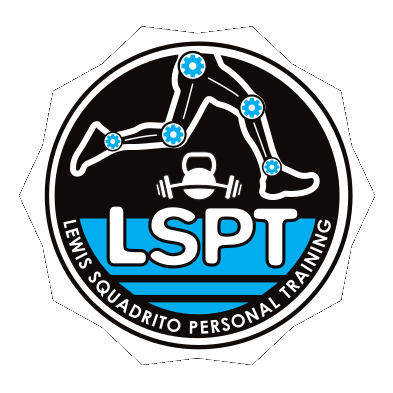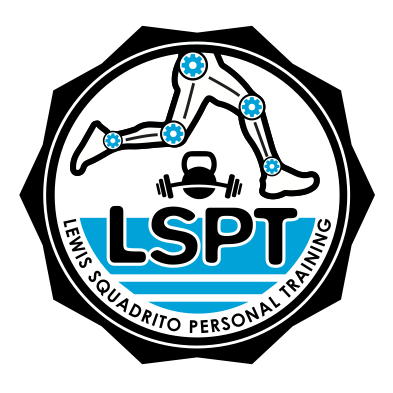A well-structured warm-up routine is essential for endurance runners to prepare the body for the stresses of training and competition, while avoiding premature fatigue. The ideal warm-up should be multifaceted, incorporating several key elements tailored to the demands of the specific workout or race ahead. Understanding these components and how to adjust their intensity and volume based on the training session is crucial.
Key Elements of an Effective Warm-Up:
General Warm-Up: Aimed at increasing heart rate and body temperature, this phase is crucial for signalling to the body that a workout is imminent. Activities like light jogging or cycling are effective, gradually escalating in intensity (how intense is dependent on the specific intensity of the workout or race).
Joint Mobilization: This involves taking each major joint through its full range of motion, focusing on both general and sport-specific movements. It serves to lubricate the joints and enhance the stretch-tension relationship within the muscle, reducing the risk of injury and enhancing performance.
Activation Drills: These drills are designed to improve muscle contractility and prepare the nervous system. They enhance the mind-muscle connection, ensuring that the muscles are ready to respond effectively during the workout.
Stability and Balance Exercises: These exercises aim to promote a strong, stable grounding of the foot. They develop proper stiffness and stability through the stance limb while in contact with the ground, which is crucial for efficient running.
Force Application Drills: These drills educate the body on how to apply force to the ground quickly and directly under the runner’s centre of mass. They are essential for developing power and efficiency, particularly in speed-focused workouts.
Introduction to Body Scanning
In the world of running, physical preparation is only half the battle; the other half is mental readiness. Body scanning, a practice borrowed from mindfulness techniques, serves as a bridge connecting these two aspects. It’s a method where runners pay close attention to their bodies, starting from the feet and moving upwards, during their warm-up jog. This practice not only prepares the body for the run but also Primes the mind, enhancing the overall running experience.
Why Body Scanning Matters
Cultivating Mind-Body Awareness: Body scanning is more than just a warm-up routine; it’s a way to deepen your connection with your body. By paying close attention to each part of your body, you develop a heightened sense of awareness, which can be incredibly beneficial in recognizing your physical state and limitations on any given day.
Injury Prevention: Regularly practicing body scanning can serve as an early warning system for potential injuries. By noticing the slightest discomfort or unusual sensation in specific body parts, you can take proactive steps to address these issues before they escalate into serious injuries.
Mental Preparation: This method also plays a crucial role in mental preparation. Running is as much a mental challenge as it is a physical one. Body scanning helps in centering your thoughts, reducing stress, and focusing on the present, thereby enhancing your mental readiness for the run ahead.
How to Practice Body Scanning
A Step-by-Step Guide:
Start at the Feet: Begin your warm-up jog and focus on your feet for the first 100-200 meters. How do they feel against the ground? Notice any sensations of pain, the presence of energy (‘pop’), or if they feel unusually heavy.
Move to the Ankles, Shins, and Calves: Next, shift your attention to these areas. Are there any signs of stiffness or discomfort? This is also a good time to notice your stride and posture.
Knees, Hamstrings, and Quads: Continue moving up, checking in with your knees and upper leg muscles. Pay attention to how they support and propel you.
Hips, Glutes, Spine, and Shoulders: Assess these core areas, vital for running efficiency. Look for any tightness or misalignments.
Finish with Arms and Neck: Finally, ensure these parts are relaxed and in sync with your running rhythm. Inappropriate tension in these areas can affect your overall form.
Reaping the Benefits
Enhanced Running Performance: Regular body scanning can lead to improved running performance. By being acutely aware of your body’s state, you can adjust your technique, pace, and effort more effectively.
Tailored Workouts: The insights gained from body scanning allow you to tailor your workout to your body’s needs. On days you feel energetic and ‘poppy’, opt for more intense sessions. If you’re feeling sluggish, consider a slower, more restorative run.
Reduced Injury Risk: By identifying and addressing areas of tightness or discomfort early, you can significantly reduce the risk of injury, ensuring a more consistent and rewarding running journey.
Post-Scanning Considerations
Evaluating ‘Pop’: If you feel energetic, plan a workout that harnesses this energy. Conversely, on days without ‘pop’, opt for training that aligns with your body’s needs – perhaps a longer, slower run, or even a rest day.
Tightness and Potential Injuries: Use your findings to focus on specific stretches, strengthening or coordination exercises that target identified problem areas. This personalized approach can greatly enhance the effectiveness of your warm-up and overall workout.
Body scanning is a powerful tool in a runner’s arsenal, offering benefits that extend beyond physical warm-up. It fosters a deeper understanding of the body, enables tailored workouts, and enhances mental focus, all of which contribute to a more fulfilling and efficient running experience. Embrace this practice to elevate your running to the next level.
Paying Attention to Your Breath:
Breath Awareness in Warm-Up Breathing is not just a physiological necessity; it’s a powerful tool to elevate your warm-up routine. As runners, tuning into our breath during the initial phase of our warm-up can have profound benefits. Nasal breathing, in particular, is a technique that should not be overlooked. Unlike mouth breathing, nasal breathing helps regulate the amount and pace of air entering our lungs, which can lead to improved oxygenation of muscles and a more relaxed state of mind.
Benefits of Nasal Breathing Integrating nasal breathing into your general warm-up phase can enhance your performance in several ways. Firstly, it promotes a state of calm, helping to reduce stress and anxiety levels. This calmness can improve your mental focus, essential for a productive training session. Additionally, nasal breathing increases the carbon dioxide in your blood, improving oxygen delivery to your muscles, crucial for sustained physical activity.
Tailoring Your Warm-Up to Your State of Mind Before starting your workout, take a moment to assess your mental and physical state. Ask yourself: Do I feel lethargic, stressed, anxious, distracted, or focused today? Your answer will guide your warm-up routine. For example, if you’re feeling lethargic or stressed, you might focus on grounding and relaxation techniques. Conversely, if you’re feeling energized and focused, your warm-up could be more dynamic, preparing you for a session of pushing barriers and paces.
Determining the Focus Point of Your Workout Your mental state during warm-up is a crucial indicator of how to approach the main part of your training. If you’re feeling focused and energized, it might be a day to challenge yourself with higher paces or endurance. If you’re feeling distracted or anxious, consider a workout focusing more on mechanics and form. This approach ensures that your training is not only physically effective but also mentally rewarding.
Tailoring Warm-Up to the Workout
It’s important to note that not every workout demands the same volume or intensity of each warm-up component. The warm-up should be specifically tailored to the nature of the workout:
For Long Runs: The focus should primarily be on joint mobilization and light activation drills. The general warm-up is still important but doesn’t need to be as intense since the heart rate should remain relatively low during long runs. Force application drills are less critical in this context.
For Speed Workouts or Interval Training: Greater emphasis should be placed on force application drills, as these sessions require high levels of force production and coordination. The general warm-up should be more vigorous to prepare the body for the intense effort to come.
For Tempo Runs or Hill Workouts: A balanced warm-up is key, including moderate-intensity general warm-up, joint mobilization, and activation drills. Force application drills can be included but at a lower intensity compared to speed workouts.
Additional Considerations:
Environmental Factors: Adjust the warm-up based on weather conditions. In colder weather, you may need a longer general warm-up to raise body temperature.
Individual Needs: Personalize the warm-up based on individual requirements. Some runners might need more focus on certain areas due to past injuries or specific weaknesses.
Progressive Intensity: Start with low-intensity exercises and gradually increase the intensity. This progression helps in adequately preparing the body and mind for the workout.
Dynamic Stretching: Incorporate dynamic stretching in the warm-up, focusing on movements that mimic running mechanics. This helps improve flexibility and functional range of motion.
Conclusion
A comprehensive warm-up routine is a vital component of a runner’s training regimen. By including general warm-up, joint mobilization, activation drills, stability and balance exercises, and force application drills, runners can effectively prepare their bodies for the demands of different types of workouts. Tailoring the intensity and volume of these elements based on the specific session will ensure optimal performance and minimize the risk of injury. Remember, a well-planned warm-up is not just a prelude to the main workout; it’s a critical part of training that sets the tone for a successful and safe workout.



Very good good